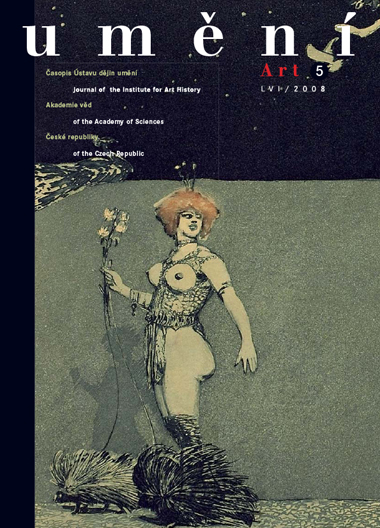Gabriela Kašková
Das ganze Sein ist flammend Leid. Eine Betrachtung zur Auffassung des Leides bei August Brömse in Bezug auf seinen zweiten graphischen Zyklus
The sentence 'All existence is burning sorrow', from the Buddhist Dhammapadam, which was very popular around the year 1900, provided Brömse with an accurate expression of his own experiences. He interpreted his own life primarily as the constant struggle to overcome difficulty and hardship. However, from the position of one suffering, he was able also to understand well the suffering of those close to him. Compassion, in the sense of the German word 'Mitleid', that is, 'co-suffering', was for Brömse one of the main principles of his conception of art. In his view a work of art was created when an artist was able to feel compassion for the world around him. Such a work should then be capable of breaking through the indifference of the viewer and appeal to his humanity. Brömse for some time gave thought to creating a series of graphic works that would capture the ubiquity of suffering in life, but he only got started on this work in 1907. His intention was to conceive the work as an open series of mutually independent scenes, which would capture the essence of suffering as it recurs in various different forms. The individual etchings would depict scenes of individual stories of human suffering, but the message would be transported onto a symbolic level. In the following year Brömse added just three etchings to the first six, gave the series a title etching, and fixed its exact order. A close analysis has shown that in doing so he subsequently introduced a certain structure to the series. Starting with the fourth etching Passions the next five form pairs with shared motifs. In the case of the etchings Preacher by the Sea and Ecce Homo in particular, which frame the series, their placement injects new life into some of their meaningful aspects. The resulting series which is also strongly influenced by symbolism, signalled Brömse's transition to an expressive phase, starting around 1912. The suffering that affects man in a diversity of forms became the main theme of his work; in particular, the figure of the suffering Christ, continued to attract the artist's attention again and again.
Full-text in the Digital Library of the Czech Academy of Sciences:
https://kramerius.lib.cas.cz/uuid/uuid:cdbb50ec-4455-1825-3c8e-dd01918b29dd
< back

